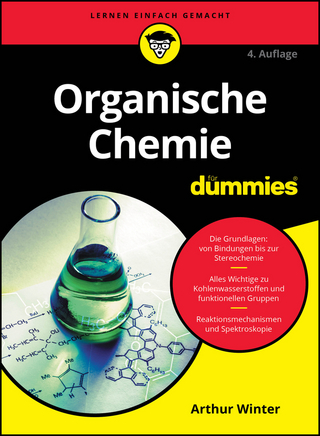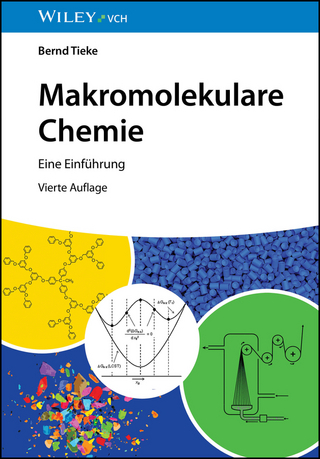
Quantum Theory of Polymers as Solids
Kluwer Academic / Plenum Publishers (Verlag)
978-0-306-42434-2 (ISBN)
- Titel ist leider vergriffen;
keine Neuauflage - Artikel merken
I. Quantum Theory of Polymeric Electronic Structure.- 1. Hartree-Fock Crystal-Orbital Theory of Periodic Polymers.- 1.1. Simple Translation.- 1.1.1. Block Diagonalization of the Hamiltonian Matrix.- 1.1.2. Elimination of the Overlap Matrix.- 1.1.3. Hartree-Fock-Roothaan Crystal-Orbital Formalism.- 1.2. Combined Symmetry Operation.- 1.3. Methods to Treat Many-Neighbor Interactions.- 1.4. Different Orbitals for Different Spin Formalisms.- 1.5. Relativistic Formulation.- 1.5.1. Introductory Remarks.- 1.5.2. Derivation of the Relativistic Hartree-Fock-Roothaan Equations for Molecules and Crystals.- 1.5.3. Concluding Remarks.- References.- 2. Examples of Ab Initio Calculations on Quasi-One-Dimensional Polymers.- 2.1. Some Polymers Used for the Production of Plastics: Polyethylene and Its Fluoro Derivatives.- 2.1.1. The Energy-Band Structure of Polyethylene.- 2.1.2. Band Structures of Fluorinated Polyethylenes.- 2.2. Highly Conducting Polymers: (CH)x, (SN)x, TCNQ and TTF Stacks.- 2.2.1. Hartree-Fock Calculations on cis- and trans-Polyacetylenes (Polyenes).- 2.2.2. The Energy-Band Structure of (SN)x.- 2.2.3. Ab Initio Calculation of Infinite TCNQ and TTF Stacks.- 2.3. Periodic Biopolymers: Homopolynucleotides and Homopolypeptides.- 2.3.1. Homopolynucleotides.- 2.3.2. Homopolypeptides.- References.- 3. Semiempirical Band-Structure Calculations.- 3.1. Semiempirical Crystal-Orbital Methods.- 3.1.1. The Pariser-Parr-Pople Crystal-Orbital Method.- 3.1.2. Semiempirical All-Valence Electron Crystal-Orbital Schemes.- 3.2. Applications to Highly Conducting Polymers and Biopolymers.- 3.2.1. Trans-Polyacetylene.- 3.2.2. TCNQ and TTF Stacks.- 3.2.3. Periodic DNA and Protein Models.- References.- 4. The Treatment of Aperiodicity in Polymers.- 4.1. Elementary Green Function Theory.- 4.1.1. Solution of Inhomogeneous Differential Equation by Means of Green Functions.- 4.1.2. Application of Green Functions to the Solution of the Time-Independent Schrodinger Equation.- 4.1.3. Simple Derivation of the Dyson Equation.- 4.2. Demonstration of the Effects of Aperiodicity on the Electronic Structure of Polymers.- 4.2.1. Effect of Side-Chain Disorder on the Electronic Structure of Proteins.- 4.2.2. Localization of Wave Functions in a Disordered Hydrogen Ring.- 4.3. Single-Site Coherent Potential Approximation and Its Application to (SN)x with Hydrogen Impurities.- 4.3.1. Derivation of the Single-Site CPA Equation.- 4.3.2. Application of the Single-Site CPA Method to (SN)xwith Hydrogen Impurities.- 4.4. The Negative Factor Counting (NFC) Technique and Its Application to Aperiodic DNA and Proteins.- 4.4.1. The Negative Factor Counting Technique in Its One Band (Simple Tight-Binding) Form.- 4.4.2. The NFC Method in Its Ab Initio (Matrix-Block) Form.- 4.4.3. Application of the NFC Method to Aperiodic Polypeptides and Polynucleotides.- 4.5. Investigation of the Localization of the Orbitals in Disordered Chains.- 4.5.1. Green Matrix Method for the Study of the Localization Properties of the States Belonging to a Disordered Chain.- 4.5.2. Application to a Model Hamiltonian.- 4.6. Treatment of a Cluster of Impurities Imbedded in a Periodic Chain.- 4.6.1. Green Matrix Formulation of the Problem.- 4.6.2. Application to a Hydrogen Impurity in a Lithium Chain.- References.- 5. Electronic Correlation in Polymers.- 5.1. Construction of Wannier Functions.- 5.2. Second-Order Moller-Plesset Many-Body Perturbation Theory for Infinite Systems.- 5.3. The Electronic Polaron Model and the Quasi-Particle Band Structure of Polymers.- 5.4. Selected Correlation Energy Calculations on Polymers.- 5.4.1. Ground-State Energy of an Infinite Metallic Hydrogen Chain.- 5.4.2. The Quasi-Particle Energy Gap of Alternating trans-Polyacetylene.- 5.4.3. Correlation Energy and Quasi-Particle Gap in a Cytosine Stack.- 5.5. Correlation in Polymers with Large Unit Cells.- 5.6. Remarks on Correlation in Disordered Chains.- References.- 6. Interaction between Polymers.- 6.1. Perturbation Theoretical Considerations.- 6.2. The Mutually Consistent Field (MCF) Method.- 6.2.1. The MCF Method in the Point-Charge Representation of the Potentials.- 6.2.2. The MCF Method in the Pseudopolarization Tensor Formulation.- 6.3. Application to DNA-Protein Interactions.- 6.3.1. Models for B-DNA and Polyglycine and Methods of Calculation.- 6.3.2. Results of B-DNA-Polygly Calculations and Their Discussion.- References.- 7. The Effect of Environment on the Band Structure of Polymers.- 7.1. Generation of an Effective Potential Field of the Environment.- 7.2. Results for a Cytosine Stack.- References.- II. Theoretical Calculation of the Different Physical Properties of Polymers.- 8. Excited and Ionized States of Polymers.- 8.1. Intermediate Exciton Theory with Correlation.- 8.2. Application of Intermediate Exciton Theory to UV Spectra of Different Polymers.- 8.2.1. Applications to Polydiacetylenes and to Polyethylenes.- 8.2.2. Applications to a Cytosine Stack and to Polyglycine.- 8.2.3. The Exciton Spectrum of Polyglycine and Polyalanine.- 8.3. Ionized States of Polymers and Their X-Ray Photoelectron Spectra.- 8.3.1. Theoretical Calculation of the Ionized States of Simple Periodic Polymer Chains.- 8.3.2. Interpretation of the Photoelectron Spectra of Polymers.- References.- 9. Vibrational Spectra and Transport Properties of Polymers.- 9.1. Methods for the Calculation of Vibrational Spectra of Polymers.- 9.2. Phonon Calculations for Selected Ordered and Disordered Polymer Chains.- 9.2.1. Polymethineimine.- 9.2.2. Polyethylene.- 9.2.3. Bent Chain of Hydrogen Fluoride Molecules.- 9.2.4. Periodic and Nonperiodic Alternating trans-Polyacetylene.- 9.3. Transport Properties of Polymers.- 9.3.1. The Theory of Bloch-Type Electric Conduction in Polymers and Its Applications.- 9.3.2. Calculation of Bloch Conduction for Narrow-Band Polymers.- 9.3.3. Theory of Hopping Conduction in Very Narrow Band Polymers and in Disordered Polymers with Applications.- References.- 10. Magnetic, Electrical, and Mechanical Properties of Polymers.- 10.1. Hartree-Fock Equations for Periodic Polymer Chains in a Magnetic Field.- 10.1.1. Static Magnetic Field.- 10.1.2. Some General Remarks about the Theory of the Effects of Magnetic Fields on Polymers.- 10.2. Electric Polarizabilities of Polymers.- 10.2.1. Theoretical Methods.- 10.2.2. Numerical Applications.- 10.3. Mechanical Properties of Polymers.- 10.3.1. Theoretical Considerations.- 10.3.2. Application to Polyethylene.- References.- 11. The Possible Role of Solid-State Physical Properties of Biopolymers in Their Biological Functions.- 11.1. Mutation and Aging.- 11.1.1. Theory of Point Mutation.- 11.1.2. Remarks about Aging.- 11.2. Carcinogenesis Caused by Chemicals and Different Radiations.- 11.2.1. Different Biochemical Mechanisms of Oncogene Activation through Chemical Carcinogens.- 11.2.2. Different Long-Range Physical Mechanisms of Carcinogen Binding to DNA.- 11.2.3. Remarks on the Effect of UV and Particle Radiation and the Initiation of Carcinogenesis.- References.
| Zusatzinfo | biography |
|---|---|
| Verlagsort | Dordrecht |
| Sprache | englisch |
| Themenwelt | Naturwissenschaften ► Chemie ► Organische Chemie |
| ISBN-10 | 0-306-42434-7 / 0306424347 |
| ISBN-13 | 978-0-306-42434-2 / 9780306424342 |
| Zustand | Neuware |
| Informationen gemäß Produktsicherheitsverordnung (GPSR) | |
| Haben Sie eine Frage zum Produkt? |
aus dem Bereich


